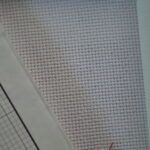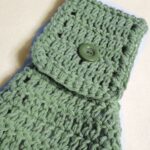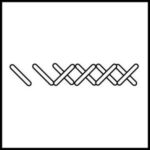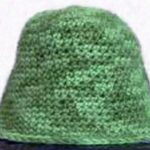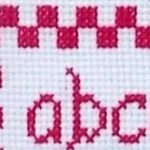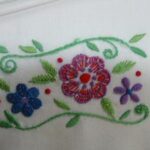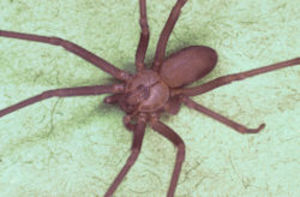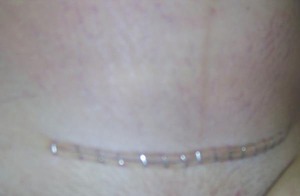The first consideration to make in creating professional looking cross-stitched pieces is to choose the right materials. Pick a pattern that is interesting to you and if possible, contains all or mostly full cross stitches. These are much easier for beginners to execute. Cross-Stitch-Art has a large variety of patterns in different styles that are created with only full cross stitches and backstitching. You can choose a simple pattern that still looks beautiful or choose a more complex pattern for those who feel comfortable with them.
Pick a piece of aida cloth that is large enough for your design and still has room left over on the sides. You will want a border between your design and the matting or frame. The cloth should be a complimentary color for the pattern but preferably a lighter color. Dark colors like black are more difficult to stitch on because you cannot easily see the openings where your needle should go through at. If you must use a dark color, it helps to stitch with a lamplight shining behind your fabric.
Cross-stitching needles have blunt ends so you should pick a needle that is for cross-stitching. In addition to choosing the proper type of needle, you should pick one that is of a size that will not overstretch the fabric when you are stitching. If you have to “undo” any stitches the holes will be very large if the needle is too big.
When beginning your design, you should find the middle of the fabric by folding it in half both ways to determine the exact center. Start on your design by beginning at a point near the center. This will ensure that you have enough room for the design to fit on the cloth. If you start in a corner and have miscalculated where to begin, you could run out of room to fit the piece or it could be off-center.
Do not anchor your beginning stitches with a knot. When framed, this will create bumps. Pull the thread through, leaving about an inch long tail. When you come back up from the back you can pull the thread over the tail to anchor it for 4 or 5 stitches, then cut off the remainder for a clean look. When ending a thread, simply run under several of the stitches the same way to anchor it and keep it from loosening up.
To make a neat front, you should have all of your stitches crossing over the same way. If your right slanting threads are on top, then you should always have them on top. If they are on bottom, keep doing them on bottom. I personally go one way down a row first, then back the other. Some people stitch the complete stitch then move on to the next. My first row looks like this: //////////////////////// then I go back with stitches like this:\\\\\\\\\\\\
Work with small lengths of thread, around two feet long is good, so that you decrease the chance of knotting up the thread while you are pulling it through. You will tangle it less if you take care not to twist the thread around. Once you pull it through several times, let it hang down and spin until it is straight again.
Taking some time and using care will prevent mistakes in counting and allow you to create evenly tensioned stitches. Working with clean hands will keep your work from getting soiled. If possible, don’t smoke or let anyone else smoke around your work-in-progress. It will discolor your cloth.
Not necessary; but certainly useful for creating a flat, crease-free finished piece; is a scroll frame. This type of frame holds the fabric on dowels and the extra fabric is rolled up on them. You roll the fabric from one dowel to the other when you need to advance the pattern. A hoop frame can be used but generally tends to leave round creases on the cloth.
Having your finished piece framed and matted professionally will really showcase your work. If you prefer you can buy a frame and mat of the proper size and do it yourself with equally nice results.
